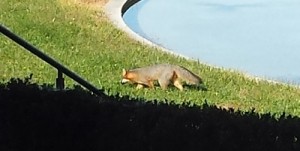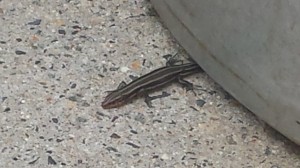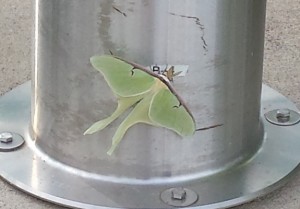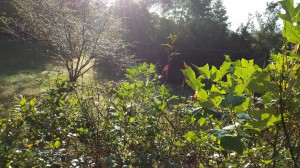Here is another addition to the Mt. Pony menagerie, a North American red fox. The red fox is actually a meta-species, with sub-species all over the world. The North American branch can be found throughout the northern half of the continent, except for the Arctic north. That’s the domain of his cousin, the Arctic fox.
This particular one has been seen around Mt. Pony on several occasions, where he dines on the local mice. At one point he got caught in one of the humane traps the security people set up for catching a troublesome raccoon. That must have been embarrassing. At least for the fox.
And for the record, I have no idea what he says.
Other creatures from Mt. Pony:





